Op. 70 Luonnotar, symphonic poem for soprano and orchestra; words from Kalevala. Completed in 1913. First public performance at the Gloucester Music Festival in England, 10th September 1913 (soloist Aino Ackté, The Festival Orchestra under Herbert Brewer). Arrangement for voice and piano, 1915. Further arrangement for voice and piano, 1915.
In the opinion of many Sibelians Luonnotar is one of the composer's very best works, an entirely original masterpiece in the same way as the late symphonies and Tapiola.
Its origin can be traced back to 1894, when Sibelius was writing drafts for an opera in which the principal characters were Väinämöinen and Luonnotar. In 1902 he had been planning an "incantation" for soprano and large orchestra. Then during the years 1905-1906 he was composing an orchestral work which he called "Luonnotar", but which at the last moment was given the name Pohjolan tytär (Pohjola's Daughter).
The musical embryo of Luonnotar can be found in an eight-bar sketch which Sibelius gave as a keepsake to Eliel Aspelin-Haapkylä in the Bar Riche, Berlin, in May 1909.
Sibelius put the finishing touches to Luonnotar four years later, in July-August 1913, after a short process of composition.
On 24th August 1913 he sent the work to Aino Ackté, who rehearsed the work with the composer on the 3rd September. "She sang well, but how far I am from perfection when I have to hurry my work, and when time cannot improve the craftsmanship! Or the patina," Sibelius complained in his diary (5th September).
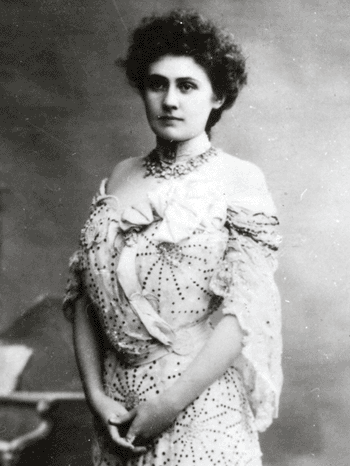
Aino Ackté performed the work for the first time at the Gloucester Music Festival, 10th September 1913. The Times praised the composer for his wonderfully rich imagination and for having a clearly individual compositional line. The Musical Times, on the other hand, complained about the difficult text. Sibelius had twisted the Kalevala phrases to fit his music, so that even the Finnish text is somewhat to understand.
The first performance in Finland took place in January 1914. The conductor was Georg Schnéevoigt and the soloist, of course, Aino Ackté. She performed her part in a way which captivated Hufvudstadsbladet's critic “Bis” (Karl Fredrik Wasenius) in his review of 13th January. Otto Kotilainen, of Helsingin Sanomat praised the work but criticised Ackté's exaggerated interpretation. However, the most accurate description of the performance can be found in Aino Sibelius's letter to her husband:
"It [Luonnotar] was absolutely marvellous. Quite gigantic in terms of the treatment of the subject. I suppose that ordinary people didn't understand anything at all. It was like a strange eagle from the primeval space of all existence. I was so exultant that I could hardly stand. (…) Two old ladies in front of me were horrified at the whole composition. They followed it from the very beginning with very disapproving expressions and almost got into a rage. They were quite comical. Otherwise people listened with great respect."
At the very beginning of the work the orchestra creates an atmosphere of the world before the moment of creation. After a humming passage in F sharp minor the soprano begins a melody which soon departs from the original idea created in the Bar Riche and rises high into the heavens.
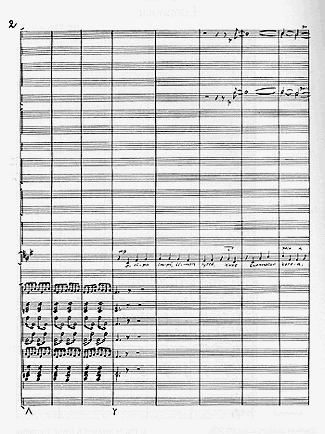
Excerpt from the score of Daughter of Nature.
Breitkopf & Härtel.
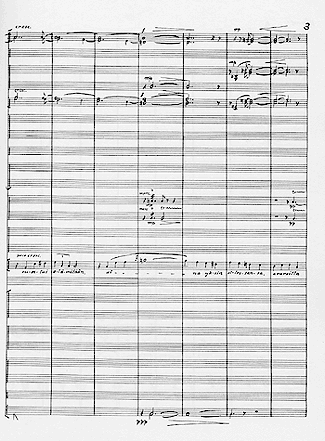
Excerpt from the score of Daughter of Nature.
Breitkopf & Härtel.
The maiden floats on the waves for seven hundred years. A flurry of wind suddenly takes the music into B flat minor. The groaning of the soprano is like the mother of the world in her labour pains.
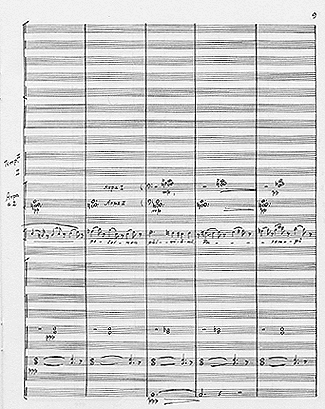
Excerpt from the score of Daughter of Nature.
Breitkopf & Härtel.
A surprisingly playful flute theme describes the appearance of a pochard (diving duck) in the sky. But when the pochard cannot find a nest, the music rises to its dramatic peak: "Aalto viepi asuinsijani" ("The wave is taking away my dwelling place").
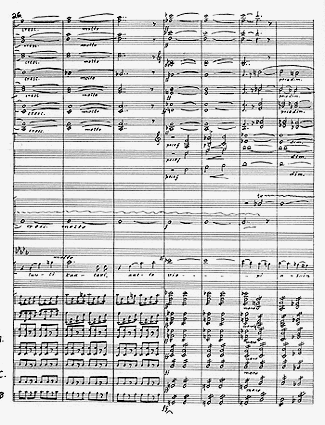
Excerpt from the score of Daughter of Nature.
Breitkopf & Härtel.
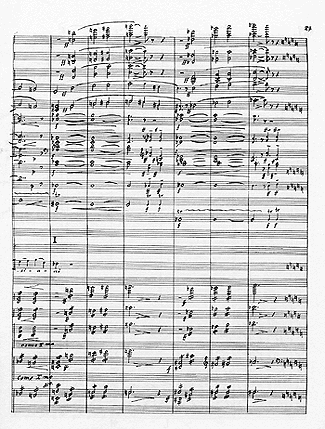
Excerpt from the score of Daughter of Nature.
Breitkopf & Härtel.
"The Mother Of Water" raises her knee above the waves and there the bird builds its nest. This is told as if from a state of trance, with the mystical sounds of the harp creating the image of a ritual.
The nest is shattered and the eggs break, thus forming the sky, the moon and the stars in the sky. Later, Erkki Salmenhaara complained, "The stars coming out in the sky is left only to an ethereal F sharp major triad of divided violins," adding, "One could criticise this way of ending the composition."
By contrast, Erik Tawaststjerna saw in the ending a premonition of the musical space visions of the 1960s.
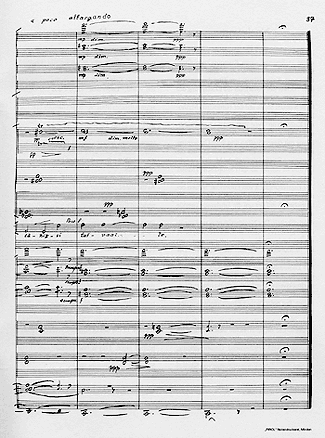
Excerpt from the score of Daughter of Nature.
Breitkopf & Härtel.
The music sounds mystical, cosmic and perhaps even ominous. After the birth of the world, a new beauty, but also new horrors become possible. The horrors would arrive sooner than Sibelius might have imagined. A year later Europe was plunged into the First World War.

